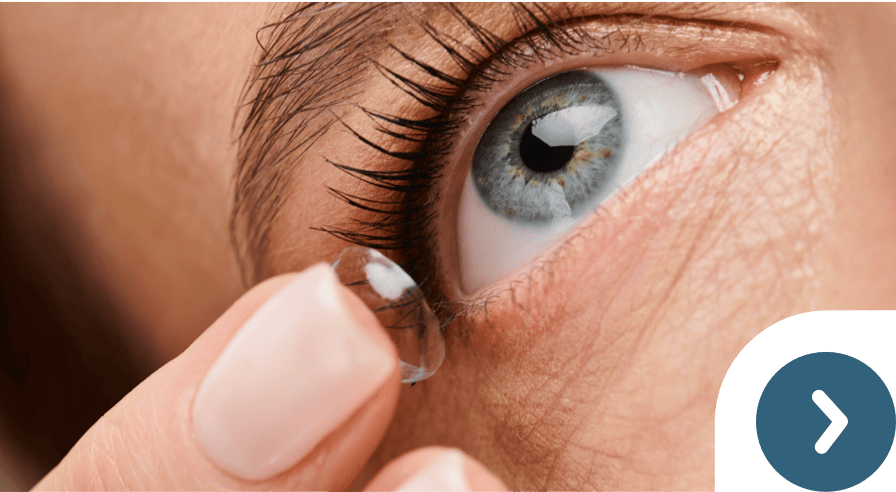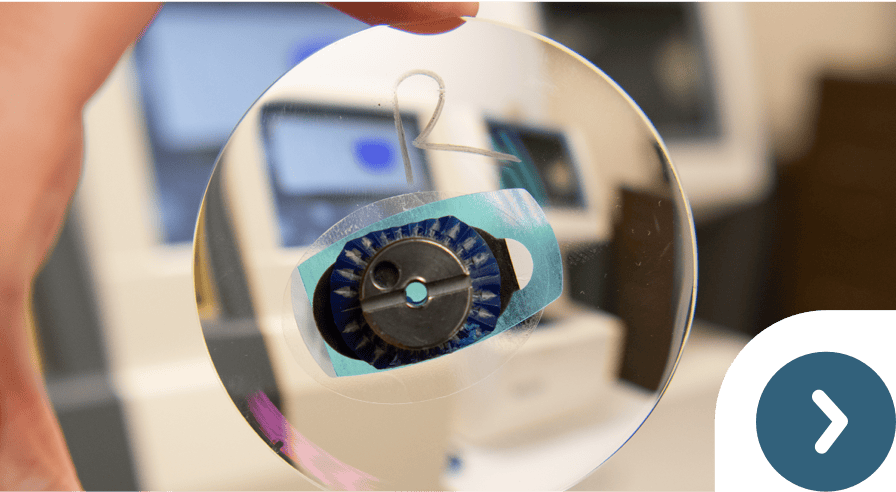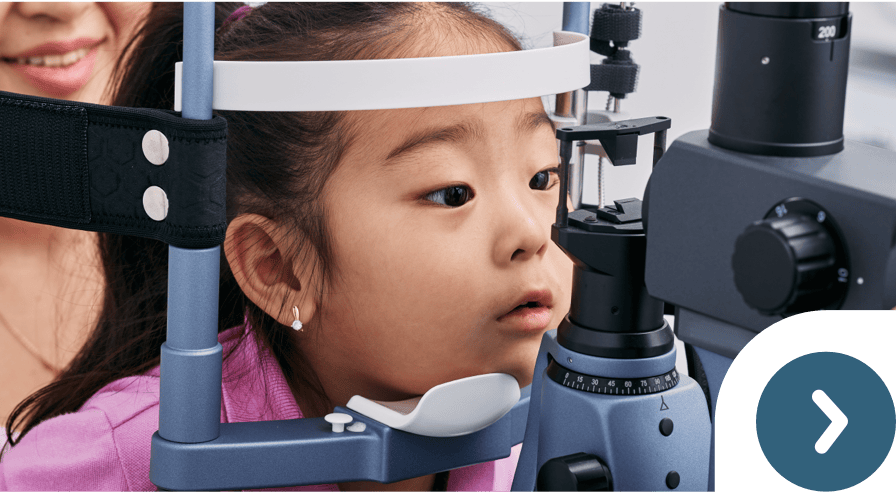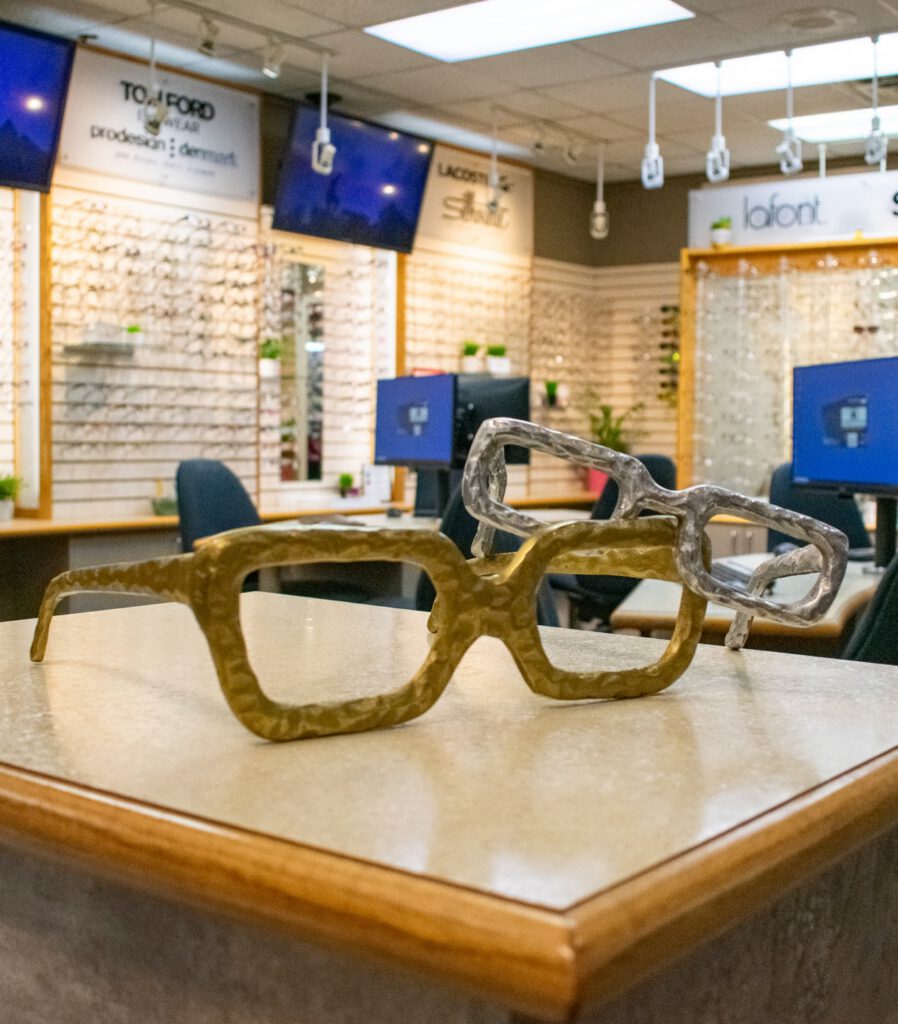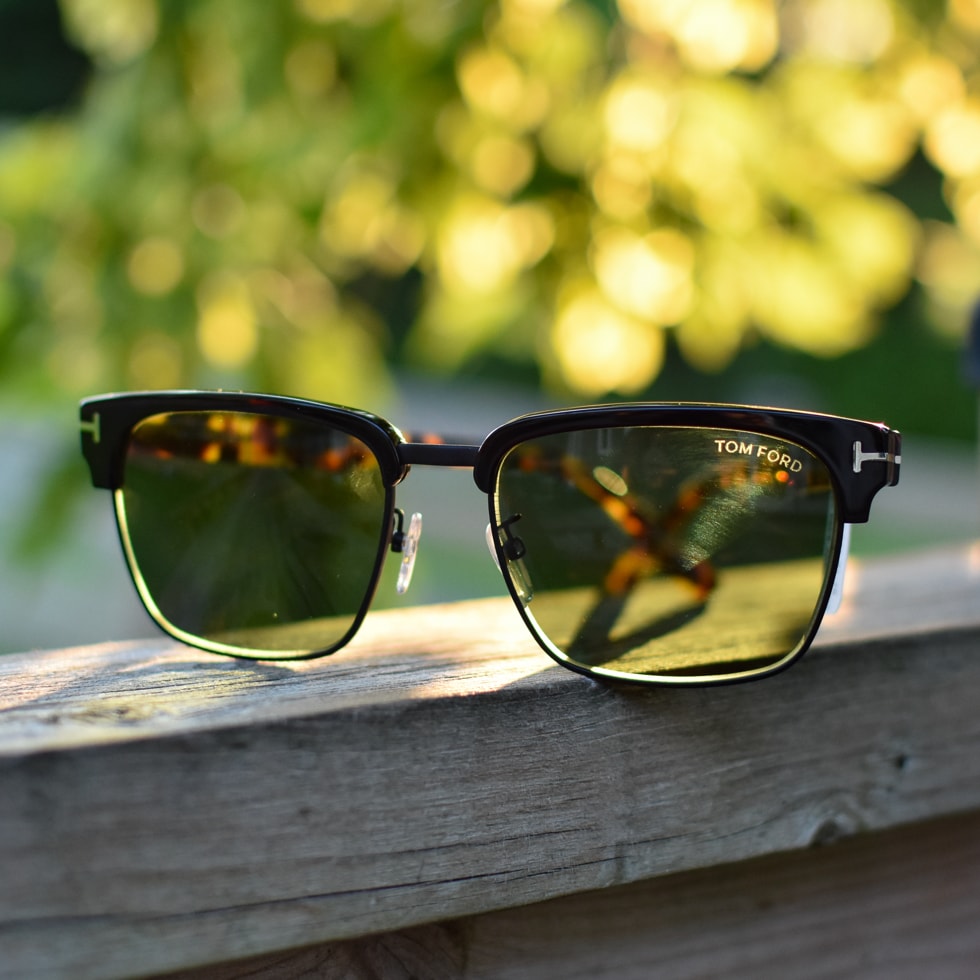Often better known as “transition lenses”, photochromic lenses are not your typical sunglasses. These lenses automatically adjust their lens tint based on UV light exposure, remaining clear indoors and becoming darker when exposed to sunlight, even on cloudy days.
You can customize your photochromic lenses to suit your lifestyle and visual needs by selecting features like polarization or different colour tints. All photochromic lenses offer built-in UV protection to help safeguard your eyes from harmful rays. If you need a little help or guidance, our Westmount Optometrists team is here to help.
All About Photochromic Sunglasses
The Technology Behind Photochromic Lenses
Photochromic lenses have certain molecules (often silver halide or silver chloride) embedded in the lens material. When exposed to ultraviolet (UV) light, these molecules undergo a chemical reaction, causing the lenses to darken. When there is less or no UV light (such as when you’re indoors), the reaction reverses, and the lenses return to their clear state.
Modern photochromic lenses have changed a lot. Nowadays, the lenses can adjust within seconds to a minute. This is true even on cloudy days (as there’s still a lot of UV light).
Normally, photochromic lenses take about 30 seconds to darken and up to 5 minutes to return to their clear state indoors. Brands like Transitions® have continued to innovate this technology, making today’s lenses faster, clearer, and more responsive than ever. If you frequently move between indoor and outdoor spaces, this is something worth considering.
Can You Customize Photochromic Sunglasses?
Photochromic lenses darken or lighten based on the level of UV exposure in your current environment. These sunglasses offer solid UV protection, and on top of these benefits, you can often also add polarization to the list.
Polarizing Photochromic Sunglasses
Some photochromic lenses come with polarization.
Polarized lenses reduce glare by filtering out horizontal light waves, like the harsh reflection of sunlight off water, car windshields, or snow. It’s an added bonus for those driving, skiing, or simply enjoying a sunny day near water.
When photochromic lenses are also polarized, you get a dual benefit: automatic light adjustment and the ability to cut glare. However, this extra combo may come at a slightly higher price point.
Do Photochromic Sunglasses Offer UV Protection?
One of the biggest benefits of photochromic lenses is their ability to provide reliable UV protection.
Photochromatic lenses block out 100% of harmful UVA and UVB rays, both of which can cause long-term damage to your eyes. With photochromic sunglasses, you’re not just seeing better; you’re also protecting your eyes.
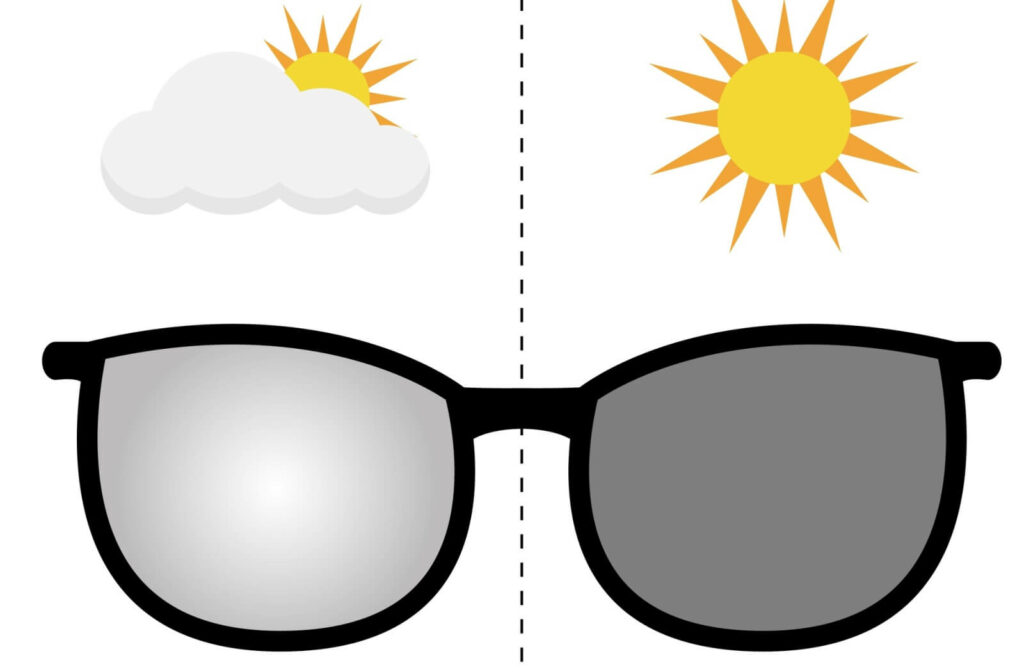
The Pros & Cons of Photochromic Sunglasses
While photochromic sunglasses are often appealing, they aren’t perfect for everyone. Like every lens option, there are benefits and drawbacks to be mindful of.
The benefits of photochromic sunglasses include:
- Convenient and Hassle-Free: No need to switch glasses when stepping indoors or out.
- Cost-Effective: Eliminate the need for carrying two separate pairs of glasses (regular and sunglasses).
- UV Protection: Protects your eyes from harmful UVA and UVB rays at all times.
- Customizable Options: Available in a variety of lens designs, colors, finishes, and even polarization.
- Modern Performance: They adjust quickly to changing light conditions.
Some drawbacks to keep in mind include:
- Temperature Sensitivity: Photochromic lenses may not darken as much in hot weather, as heat can slow the chemical reaction. In cold weather, it may take longer for the lenses to clear.
- Not Ideal for Driving: Car windshields block most UV light, meaning that photochromic lenses won’t darken properly in vehicles unless they’re specifically made for this purpose.
- Slower Indoors: While transition lens technology has significantly improved, some lenses may still take longer to fully clear up indoors. It can still take around 5 minutes for the lenses to clear back to normal.
- Wear and Tear: With time and wear, the lens coating becomes less effective. After 3 years, you might notice that the lenses lose their ability to transition as smoothly between brightness settings.
- Price Point: They can be pricier than standard glasses.
Finding the Perfect Photochromic Sunglasses
Finding the perfect pair of glasses involves more than choosing frames or lenses that you love. The way they rest on your face matters more than you think.
Photochromic lenses need to sit properly on your face to offer full protection and provide solid visual clarity. If they’re slipping down your nose or pinching your temples, you’re going to notice discomfort..
Perfectly fitting glasses feel comfortable and provide great visual clarity. When it comes to protecting your eyes and elevating your style, every millimetre matters.
Time to Upgrade Your Sunnies
Photochromic sunglasses are a game-changer. Blending comfort, convenience, and protection in one stylish package. Whether you’re an outdoor lover or simply hate rummaging for a second pair of glasses, they could be exactly what you need.
Visit us at Westmount Optometrists to explore our selection of sunglasses, frames, and photochromic lenses. We proudly offer Transitions® lenses, a trusted brand known for high-performance light-adaptive technology. Get fitted by one of our experts and experience eyewear the way it should be—with your lifestyle in mind and top-quality products to choose from.


